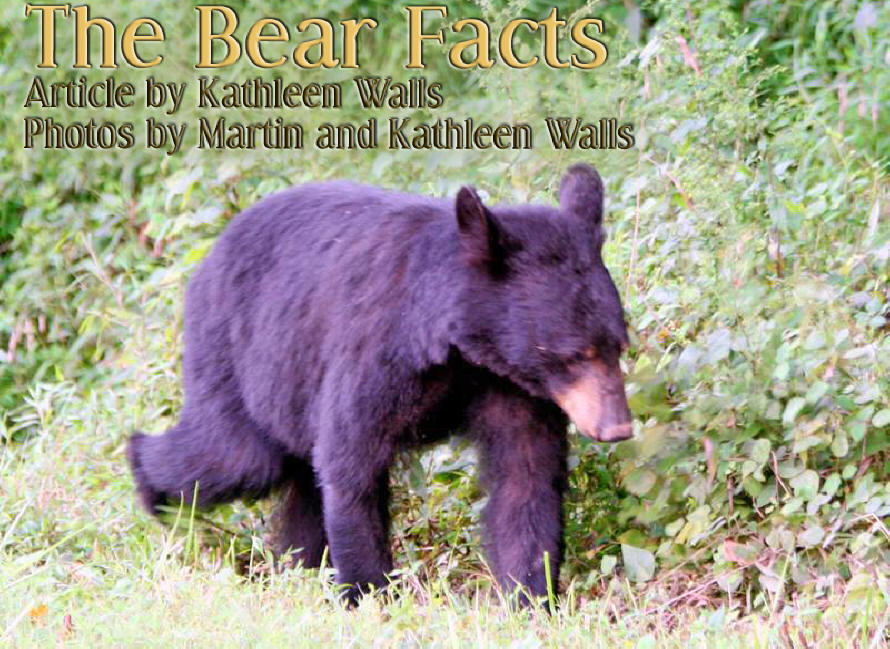
The American Black Bear has a wide range. They are found along
the eastern seaboard of North America from Alaska to Northern
Mexico and in parts of western United States. They roamed
Florida
long before subdivisions and ranchs took their property. They are very
adaptable so they have learned to survive in closer proximity to
humans than many other wild creatures. This very trait that
helped them survive for millions of years, now is putting them
on the path to extinction. Florida Governor Ron DeSantis's Fish
and Wildlife Commission (FWC) are contemplating another bear
hunt.
Coincidentally, while the hunt is being discussed an 89-year old Collier
County man was allegedly killed by a bear. Autopsy results for
the man are still pending as of this writing, but it spurred the
killing of three bears so far.
Bears have become wonderful scavengers
and have learned to raid garbage dumps and food left outdoors
for pets, which often lead to bear human clashes. This behavior
has led to serious problems in Florida but there has never been
a person killed by black bear until now. Bear encounters could be easily
discouraged by humans using bear proof cans and not putting food
out where bears are attracted to it at night. However, given a
choice Governor DeSantis has already gone after the bears in
2024, when he signed a bill into law that allows state residents
to shoot and kill these animals on their property without legal
penalty if the shooter claims he or she felt threatened. Of
course, the bear is dead and can't tell his side of the story.
In spite
of the fact they have only been taken off the Endangered Species
List in 2012. FWC authorized a hunt without first establishing
how many bears we actually have in Florida in 2015. Then they issued
unlimited permits. In spite of heavy opposition from a majority
of the citizens of the state, on October 24, 2015, there were
more licensed bear hunters in the woods than bears. (No one has
any way of knowing how many unlicensed poachers were there as
well)
Based on FWC's own projections, the Florida black bear is
destined lose
2.3 million acres of habitat by 2060. Already, thanks to
overdevelopment in their habitat, bears only have 18%
of the habitat they once had, so naturally there will be sighting
of bears in Florida neighborhoods. A few safety points are:
avoid getting between a mother bear and her cubs, never feed
them and do not leave food where they will smell it and be drawn
to it, do not try to get too close. Normally, bears are shy and
will avoid humans if possible but if you do cause it to exhibit
aggressive behaviors such as running toward you, making loud
noises, or pawing the ground that indicates the bear is trying
to get more space. Don't ever run just slowly back away while
keeping your eyes on the bear. As you move away, the bear will
probably do the same.
I have enjoyed seeing these remarkable creatures in the wild
occasionally, as well as in refuges and zoos. Unlike their
cousins, the grizzlies, they do not hibernate. In the northern
part of their habitat; they will remain in their den and dormant
in winter. In Florida they may build dens in trees or palmetto
thickets but do not become dormant. The only one I ever saw in
Florida in the wild was in Ocala National Forest while
researching my Wild About
Florida books.
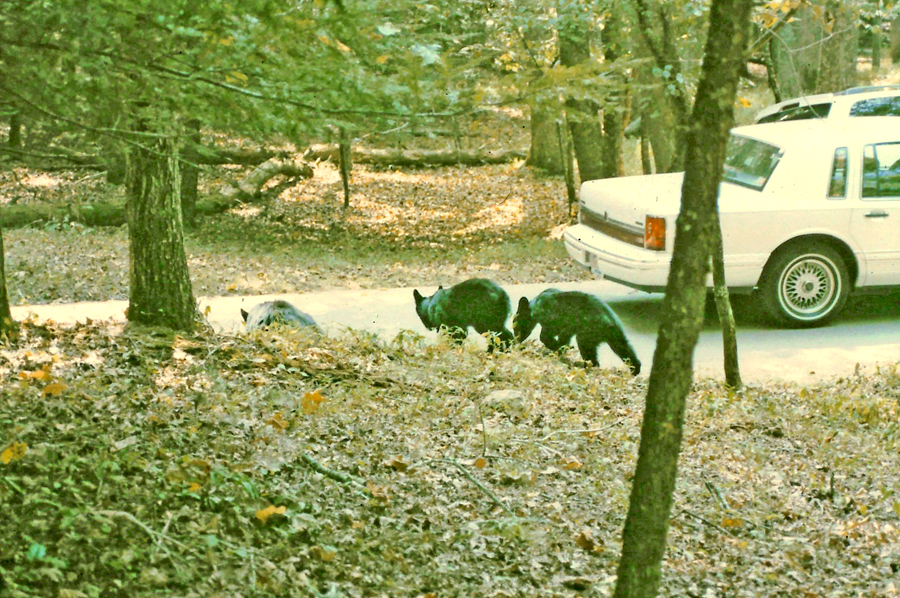 |
| Momma bear teaching her two cubs
how to cross a road in Cades Cove |
Other states have learned that they are a attraction for
visitors.
Cades Cove
in Great Smoky National Park is a wonderful place to see them
in the wild. Last year over 10 million visitors enjoyed the park
and Cades Cove is its most popular destination.
I have seen bears almost every time I visited there. Once there
was a mother bear and two tiny cubs near one of the old
churches. We kept our distance and watched in awe. If you want
to enjoy a safe bear sighting experience in the wild, Cades Cove
would be my number one pick.
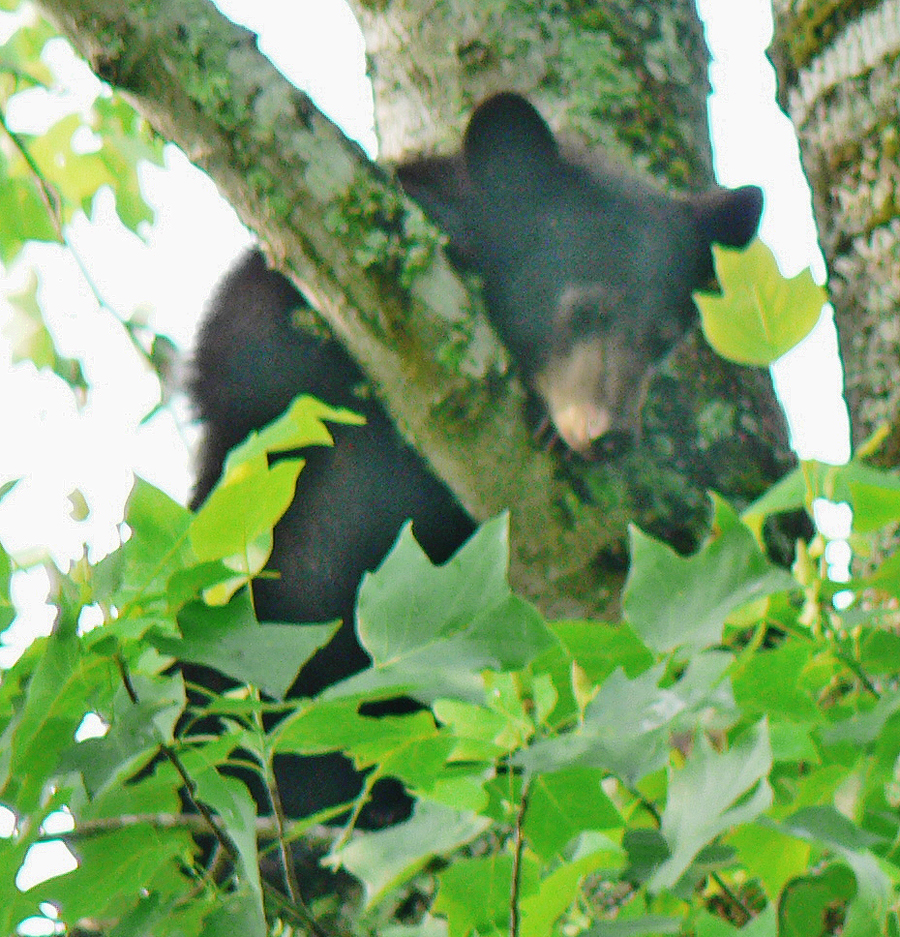 |
| Bear cub looking down from a
tree top perch |
If you want to see a bear in the wild in Florida, before FWC
eliminates all of our bears, I would suggest
Ocala National Forest.
It's,
430,000 scenic acres of the most diverse terrain imaginable.
It contains highlands, swamps, 600 lakes, countless
ponds, 23 streams and springs of clear crystal water.
It's bounded by the slow, dark waters of the Ocklawaha
River on the west and
the larger, faster moving St.
Johns River on the east. This vast forest is partially
located in
four
counties:
Marion,
Lake, Putnam and Seminole.
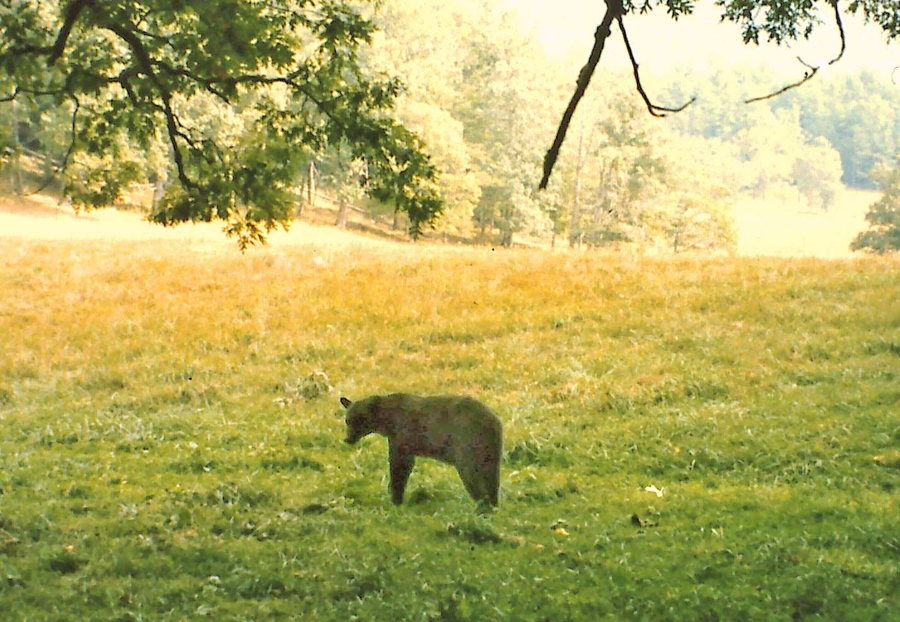 |
| A lone bear at Cades Cove |
The forest is home
to a multitude of animals and they probably have the largest
population of black bears in the state.
Our one
memorable
sighting
there
was on one of the forest roads off Hwy. 19 just south of Hwy.
40. A large black bear lumbered out of the woods and crossed the
road just about 100 feet ahead of us. We were too surprised to
get the camera focused on him before he entered the forest on
the other side of the road and disappeared among the trees. The
road was
really rough and had lots of deep puddles
so I suggest you have a four-wheel
drive
if you brave it.
Sadly hunting is allowed here. We can only hope the one we saw
was spared.
If you're looking to see the Florida black bear in more
traditional surroundings, many of the Florida zoos recognize the
need to protect the beautiful creatures and have created special
habitats.
Caribbean Gardens
Naples is home to Caribbean Gardens and has
created Black Bear Hammock, the largest black bear exhibit at
any Association of Zoos and Aquariums accredited zoo east of the
Mississippi. It allows the bear to romp in a suburban style
backyard setting with a picnic table and kiddy pool as well as
the more natural traditional habitat. The traditional habitat
shows some of what had destroyed the bears' homeland over the
years in Florida. Human intrusion is displayed by means of some
cypress stumps and logs, a shack, and a railroad trestle over a
series of descending pools. The display was home to two bears
rescued several years ago. from a private owner in
York, South Carolina who had penned the cubs in a 10-by-10
concrete floored cage. Toby was four and Anna two when they
arrived at the Naples Zoo. Toby passed away from cancer
several years abo but Anna, now 17 still enjoys her zoo home.
 |
| Bears in a zoo enjoy social time |
Central Florida Zoological Park and Botanical Gardens
Central Florida Zoological Park and Botanical Gardens
is the crowning jewel of Seminole County. It's a small but well
maintained zoo. Central Florida Zoo has a Florida Black Bear
Habitat that house two bears brother and sister bears, Ella &
Guignard.
The bears were being kept illegally by some loggers in Georgia. The
cubs were too used to interacting with people to release
them in the wild.
Too often this is the problem people cause when they feed and
encourage bears and do not realize they are setting the stage
for a tragedy.
Palm Beach Zoo
Palm
Beach Zoo began in the 1950s when Paul Dreher, Parks Director for the City
of West Palm Beach, started it as a garden with a few chickens,
two ducks, a goose and a goat. It has grown and become a
institution in West Palm Beach. Its mission is to "protect
wildlife and wildlife habitat, and to inspire others to value
and conserve the natural world."
 |
| Bear enjoys the stimulation of
walking across a log |
To fulfill this, one of the programs it has instituted is a
unique interactive experience with their resident bears, Lewis
and Clark. It's a behind the scenes look at the bear habitat in
the zoo. Visitors are given a
lot of information as they tour the dens and then get to feed
the bears some honey. It's a simple training sequence keepers do
automatically but for a person who had never worked with a bear
it is an unbelievable experience. The point of the experience is
not only the fun. It's a chance to learn ways to respect and
protect these precious creatures.
Jacksonville Zoo
Jacksonville Zoo
is one of Florida's oldest and largest zoos. It brought in its
first bear in the 1960s and have fostered and protected this
native animal ever since. It's
Wild Florida habitat
is a 2.5 acre natural wetland that is home to the bears, wolves, cranes, bald eagles, bobcats, deer and
owls as well as alligators and some of Florida's reptiles
and many other interesting animals.
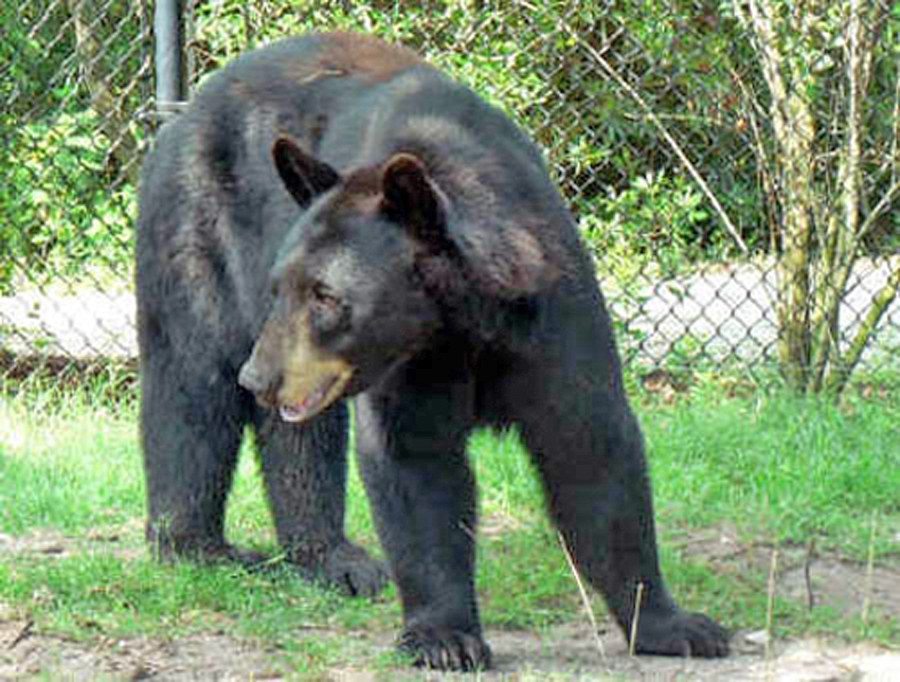 |
| Jacksonville Zoo bear watches
the people watching him |
Lowry Park Zoo
Lowry Park Zoo
in Tampa is one of the country's favorite zoos. Voted the #1 Zoo
in the U.S. by Parents Magazine in 2009, it offers a special
children's section as well as many educational and fun exhibits
for all ages. It is currently providing a safe home to three
bears that would have been killed otherwise. One of the
bear keepers, told me about them.
"Newberry came from
around Homosassa, Florida. She is about 13 years old now but was
about 6 month old when we got her."
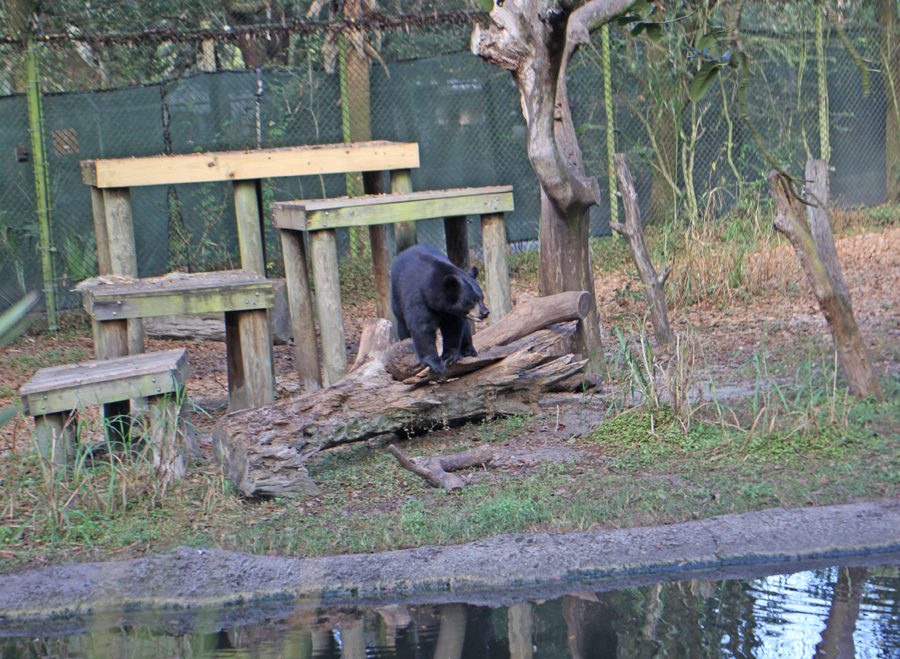 |
| Newberry at Tampa Zoo
enjoys her habitat |
They do not know how she was orphaned. Bear cubs stay with the
mother for much longer than most animals, from 16 months to two
years. This is how they learn to forage and care for themselves
just like human young. Bears
who lose their mothers before this often do not know how to
survive.
Campbell, their other female, came from Montana at about the
same time and age. She too was found orphaned. She was kept at a
rehab facility for awhile but got too used to human contact so
could not be released.
There is also a Sun bear named Kasey who keeps them company.
 |
| Newberry strolling along her
"stream" |
Bears are safe in zoos at least for now.
I know there are those who say zoos are like a jail. Modern zoos
are no longer those places with restless animals pacing in tiny
cages. They are trying to match the native habitat and provide
mental and physical stimulation for their animals. One of the
things many zoos are doing is captive breeding programs. They
recognize this may be the only chance to prevent extinction in
endangered and threatened species. The Species Survival Plan
(SSP) was developed by the Association of Zoos and Aquariums
(AZA) in 1981. Of the eight bear species, black and brown bears
are not included since 2012 when they were on the endangered list
but if this type of dangerous hunting continues in Florida (or
anywhere) they could be added again.
C.A.R.E. Foundation
If they gave an award for the most unique wildlife rescue
sanctuary, it would surely go to
C.A.R.E. Foundation
Standing for Creating Animal Respect and Education.
Christin Burford, the director and driving force behind
C.A.R.E.,
has been working to relive the plight of abused and homeless
animals since 1996, when she founded the C.A.R.E. Foundation to
provide a home for non-releasable exotic animals that would
otherwise be difficult or impossible to place. She had brought
together species that normally would not interact but at her
facility they are best friends such as a pop bellied pig and a
small Yorkie.
CARE is one of the refuges that take in bears that need to be
housed where they cannot interact in the wild with humans. The
resident black bear at CARE is Lola. Lola was used in a Florida TV show and then
was going to be auctioned off (probably for a canned hunt). She
has a safe home today thanks to this wonderful facility.
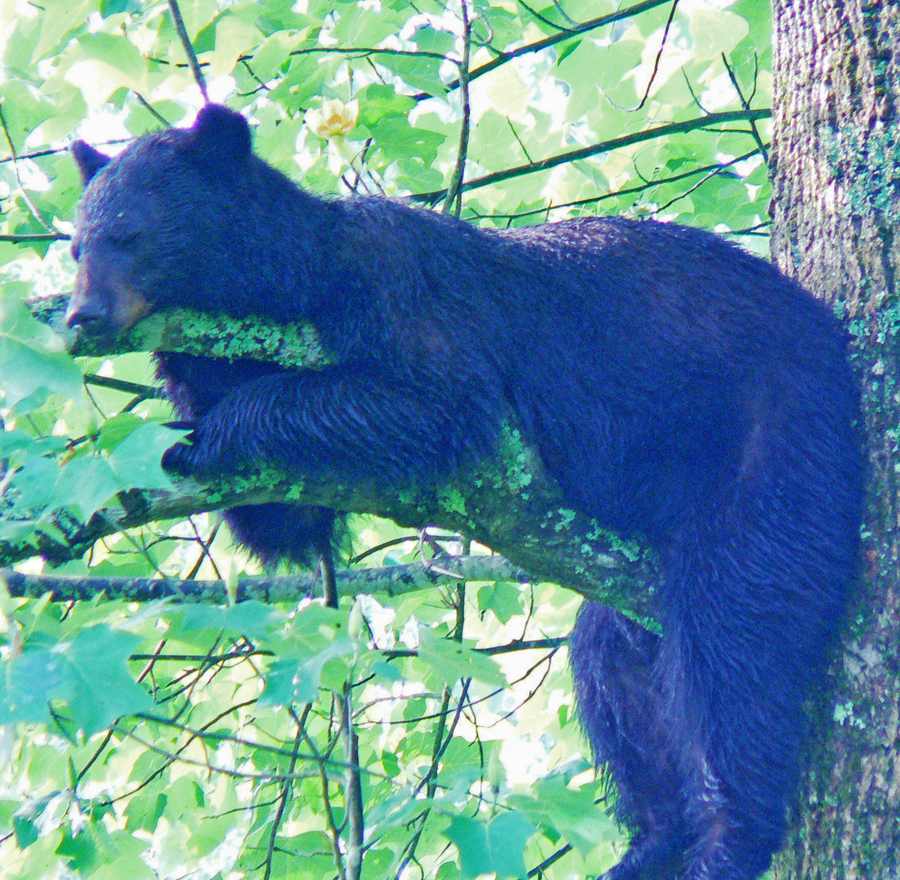 |
| A large bear in a tree at Cades
Cove |
Zoos and refuges offer other alternatives to bear/human problems
besides killing the bear. When there is a bear and human
conflict where the bear cannot be relocated to a safe place in
the wild, zoos and refuges are a viable alternative. If FWC
feels there are too many bears, spay and neutering is yet
another option. Last case scenario, when bears have to be
killed, it could be done mercifully by rounding up the older
sick bears and humanely putting them down. Allowing people to
pay for the right to kill this magnificent creature is as
barbaric as the spectacles in ancient Rome where people paid to
see humans fed to lions and gladiators fight to the death. Have
we not risen above this level of "sport?"
One Protest
One organization fighting to protect our bears is
One Protest , that
tries to protect all wildlife. If you would like to learn more
about how to help stop future hunts in Florida, this is a good
place to go. Their Facebook page is
https://www.facebook.com/stopbearhunt/
Here's the email for Bear Comments at FWC
BearComments@MyFWC.com/
To contact more directly here is a page with senior staff info
https://myfwc.com/contact/fwc-office/senior-staff/a> If
you wish to contact the Governor,
https://www.flgov.com/eog/leadership/people/ron-desantis/contact/
and (850) 488-4676
Public
Disclosure Please Read FTC has a law
requiring web sites to let their readers know if any of the
stories are 'sponsored' or compensated. We also are to
let readers know if any of our links are ads. Most are not.
They are just a way to direct you to more information
about the article where the link is placed. We have several ads
on our pages. They are clearly marked as ads. I think
readers are smart enough to know an ad when they see one but to
obey the letter of the law, I am putting this statement here to
make sure everyone understands. American Roads and Global
Highways may contain affiliate links or ads. Further, as their
bios show, most of the feature writers are professional travel
writers. As such we are frequently invited on press trips, also
called fam trips. On these trips most of our lodging, dining,
admissions fees and often plane fare are covered by the city or
firm hosting the trip. It is an opportunity to visit places we
might not otherwise be able to visit. However, no one tells us
what to write about those places. All opinions are 100% those
of the author of that feature column.
Search our site
We'd love to have you follow on social media. please use our hashtag,
#ARGH
|

 |
 |

Pintrest |

Email us
You can order autographed copies of
my books at
KatysWorld.
My newest is
American Music: Born
in the USA
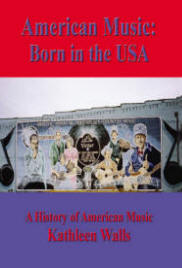
|
|
| 


